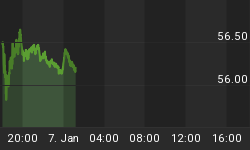Metal prices moved positively this week. Silver led with a gain of 2.5% followed by gold at 1.9% and palladium at 1.2%. Platinum showed a small loss of 0.4%.
GoldMoney customers, who hold almost 21 tons of gold in storage worldwide, increased their trading activity this week by 39% despite the North American markets closing for the Thanksgiving holiday. The allocation of trading swung in favour of gold which accounted for 69%. Customer trading in both gold and silver moved from a strong net buy last week to a marginal net sell this week. General sentiment weakened slightly with the ratio of buyers to sellers falling to 0.95 from last week's 0.98.
GoldMoney's Head of Business Development Andrew McGowan said: 'We've continued to see some significant buy trades in gold this week although general sentiment remains under pressure. Interestingly, the decline in the ratio of buyers to sellers was primarily driven by silver where the ratio fell 14% even though silver showed the largest price increase for the week.'
Amid the bearish sentiments of the gold market, there was an interesting day's trading on Monday says Alasdair Macleod, GoldMoney's Head of Research: 'At 0600GMT on Monday morning a seller of 1,500 contracts pushed the price down $11 to $1226.7, forcing a trading halt for 20 seconds. This appeared to be a deliberate attempt to drive gold down to the $1200 level and beyond by taking out all the stop-loss orders in the market at a quiet time and is a repetition of tactics employed on several previous occasions. This time it didn't work and after the trading halt the price stayed above $1230 before closing strongly up on the day at over $1250.'
Physical gold demand is unlikely to dwindle thanks to the Asian appetite for the precious metal says Alasdair: 'Gold deliveries on the Shanghai Gold Exchange appear to be picking up again, and net exports for October from Hong Kong hit an all-time high of 131 tonnes (the breakdown of these figures will be available in mid-December). There is a sense that positive seasonal factors are likely to generate higher physical demand from Asia, which fails to recognise the fact that at these low prices it is likely to increase anyway.'















